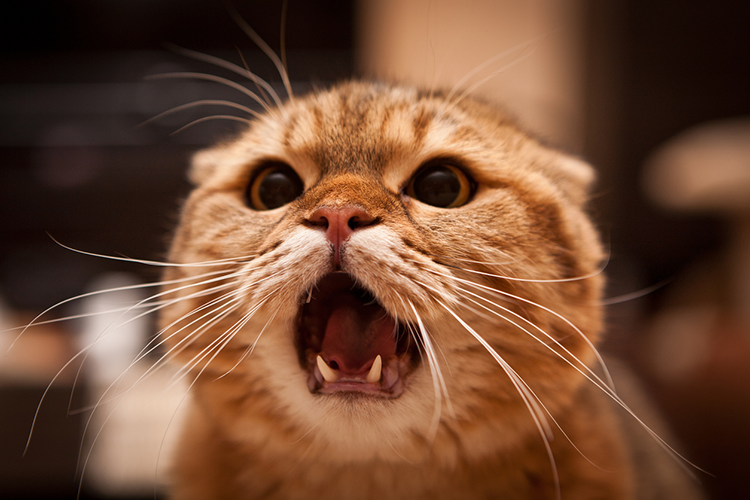The word fatigue isn’t bandied around our house often. My cats are similar to hobbits; sure to fit in the appropriate amount of nap time between their first and second breakfasts. However, a little-known fact is that cats often suffer from whisker fatigue, a sensitivity they experience from the overstimulation of their whiskers. The good news is that there are simple fixes that you can make around the house to resolve this common issue.
What is Whisker Fatigue?
Do your felines treat your home like a veritable touch and feel book? Is each chair corner a unique treasure, your brand new rug like an undiscovered country just waiting to be explored or even better – vomited on? If you’ve noticed your fur baby rubbing their muzzle over every inch of your (their) home, take a second to realize that this is their way of marking territory. In addition, their whiskers (technical name vibrissae) contain sensory organs called proprioceptors. When they come into contact with an object or a specific surface, vibrations are sent through the follicles to nerve-filled areas of their body, including their face and behind their front paws. Whiskers help your cat negotiate spaces, get around when it’s dark, and sense air currents. Like one too many edibles at Coachella, a good day can quickly turn downright awful for your cat if they experience oversensitivity or whisker fatigue (hence their penchant for biting and/or swiping at you when you pet them one too many times). While a lot of cat parents ascribe their fuzzy bub’s fear or apprehension to plain old cattitude, these can be signs that your cat is experiencing whisker fatigue.
How do Cats Experience Whisker Fatigue?
If your cat is hesitant to approach their food or water dishes, whisker fatigue could be the culprit. While a newer diagnosis within the veterinary world, whisker fatigue can often occur when cats are forced to stick their faces into deep bowls, causing their whiskers to rub against the sides. According to the New York Times, this can be a very stressful experience for them. As a reaction to this condition, your cats may start pawing their food out of the bowl. They might appear apprehensive at meal times or even fight with their fellow felines. They might even develop acne around their mouths and nose.
How Can I Help?
Think of your kitty’s whiskers as antennas that need to remain straight in order to get reception. They collect information all day and help your cat navigate their way in the world. Imagine constant signals being sent to your brain, without any time to relax. While it appears that kitty is living a problem-free life, this can be a big cause of their stress. A simple fix is to provide them with whisker-friendly bowls. Hepper has a line of wide-lipped tray dishes for stress-free mealtimes. This easy solution allows kitty to eat and drink without grazing their whiskers against the sides of the dish.
While we’re on the subject of whisker fatigue and cat dishes, here is another issue that causes your gato to roll their eyes. Keep water and food sources completely separate from each other. When water is placed near their food source, your cat will consider it contaminated, and will not want to drink as much. By placing these dishes on opposite sides of the room, you’re sending your fur baby the message that their water is clean and residue-free. While they can’t say it, small fixes like this can make a huge difference when it comes to your lil’ fuzz living a stress-free and happy life.






